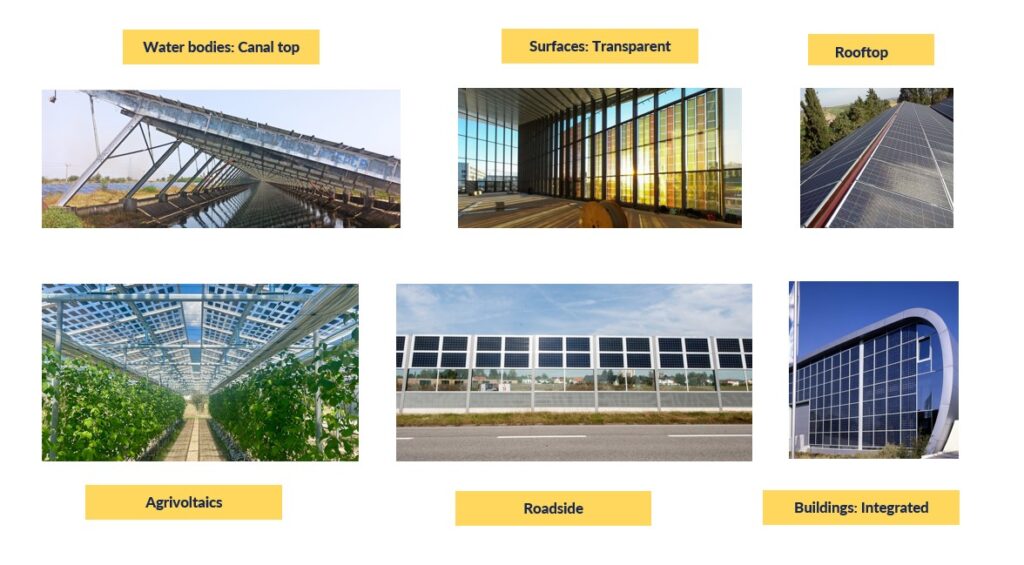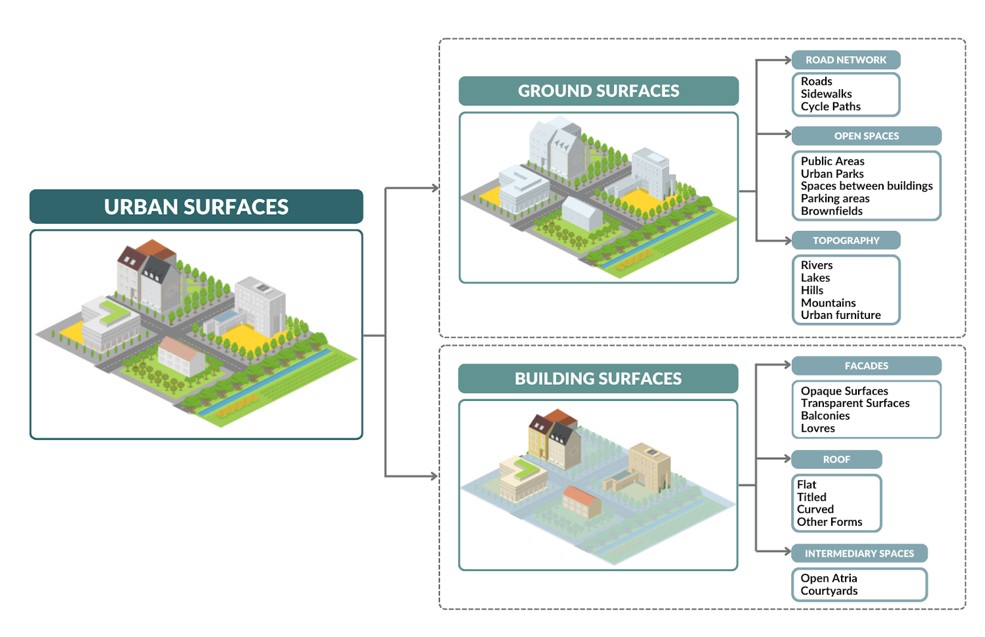Accelerating Urban Energy Transitions: The Critical Role of Solar PV in Achieving 100% Renewables
Introduction
The transition from fossil fuel energy sources to renewable energy sources is crucial in the fight against climate change. In 2022, over 36.8 Gt energy-related CO2 emissions were noted annually worldwide, the use of which exacerbates climate change and poses a severe health hazard related to air pollution and environmental degradation [1]. According to the International Renewable Energy Agency [11] , to stay on the 1.5°C Pathway of the Paris Agreement, renewable electricity capacity must increase over threefold by 2030.
This article, therefore, discusses the potential of solar photovoltaic technology as one of the critical solutions to such challenges and assesses the role of solar PV in urban energy transitions to demonstrate how cities can actually use this technology in order to meet ambitious climate targets, improve energy security and support global sustainable goals.
Importance of Renewable Energy in Urban Settings
Urban areas are an integral part of the global energy transition. Due to their extensive economic activities and growing populations, these cities consume large volumes of energy and are significant contributors to GHGs. Therefore, there is an urgent need to transition away from fossil fuels to renewable energy sources. This transition will not only reduce CO2 emissions and mitigate air pollution but also create healthier and more sustainable urban environments for the future.
Current energy landscape:
The current energy systems are heavily based on fossil fuels, leading to significant CO2 emissions and environmental degradation. According to UN-Habitat, in 2022, cities use 78% of the world’s primary energy and are responsible for 60% of greenhouse gas emissions [2] . This high dependence on fossil fuels underscores the need to shift towards renewable energy in order to address the consequences of climate change on humankind and sustain cities.
Benefits from Renewables
Environmental Benefits:
- Reduced GHG emissions: renewable energy sources, such as solar and wind power, emit close to zero GHGs when they are running, hence the protection of the climate.
- Better air quality: renewable energy, as opposed to the use of fossil fuels, reduces air pollution, thus creating healthier urban settings.
- Less habitat destruction: In contrast to fossil fuels, renewable energy projects typically require less land and can be integrated into existing landscapes with minimal disruption. Therefore lower mining and drilling impact on natural habitat and reduced oil spills and accidents harming marine life.
- Preservation of ecosystems and species: biodiversity conservation by reducing reliance on fossil fuels, renewable energy helps protect ecosystems and the species that depend on them.
Economic Benefits:
- Reduced energy costs: renewables can offer cities and their residents more stable and often reduced energy prices compared to fossil fuels, helping lower cities’ energy expenses.
- Fostering local economy and job creation: the renewable energy industry creates jobs in manufacturing, installation, maintenance, and related sectors, thus contributing to the growth of local economies.
Social Advantages:
- Improved public health: cleaner air, a direct result of reduced fossil fuel use, translates to fewer health problems from pollution for public health.
- Energy access security: Renewable energy technologies can offer reliable energy access in underserved or remote urban areas, contributing to energy security.
How can cities help with the energy transition?
Cities and local governments have a critical role in driving the local energy transition. They can set ambitious climate targets, implement renewable energy solutions, and promote energy efficiency and conservation measures at local level. Throughout this transition, local and regional governments have key responsibilities in:
- Setting and enforcing local policies on climate: Cities can set leading targets and policies that make them forerunners in the more extensive diffusion of renewable energy.
- Supporting renewable projects: Cities can support local renewable projects and spur investment and innovation in clean energy technologies.
- Engaging with stakeholders: Active collaboration among national governments, private sector partners, and community organizations is the only way to ensure the successful deployment of renewable energy solutions.
The energy transition offers significant environmental benefits as well as strong economic and social advantages. Embracing renewable energy, energy efficiency, and conservation measures will increase energy security and affordability, improving pathways to sustainable and resilient urban environments.
Solar PV as a key solution: Transforming the urban energy landscapes
Solar Photovoltaic (PV) technology stands out as a vital technology solution to the growing energy demands of urban environments. Solar energy, being a renewable energy resource, is the most abundantly available resource and offers a cost-effective and efficient avenue for electricity generation, which is crucial for transforming urban landscapes. The potential of solar PV lies in the fact that earth receives more solar energy in an hour compared to what the world consumes in a year. If only 0,1% of this energy were converted at an efficiency of 10%, for instance – it would provide an equivalent of four times the world’s electric capacity [3] . This gives evidence as regards the potential of solar PV to meet current energy demands many fold.
Understanding solar PV technology: Solar PV technology in urban settings and highlighting its role in the clean energy transition.
Solar PV technology harnesses solar energy and converts it into usable electricity through semiconductor-based cells. In urban settings, these systems can be integrated into various urban infrastructures and scaled according to specific needs. Complemented by batteries, inverters, and other essential components, PV systems offer a comprehensive solution for energy management and storage. On the other hand, the advancements in solar PV technology have increased conversion efficiencies, with current commercial modules achieving over 25% efficiency [4]. The International Renewable Energy Agency strikes a finding: if the world is to successfully limit its rise in global temperature to below 1.5°C—a target set out in the Paris Agreement—more than 11 TW renewable energy must be generated [5].
The current solar PV installations doubled from 2022 installations, making 1581 minimum installed cumulative capacity by the end of 2023 [6]. Although positive, solar capacity additions must be far more ambitious if climate goals are to be met. The myriad uses of solar energy—from large ground-mounted installations to rooftop solar systems—make the case for investing and innovating in this area all the more compelling. In this effort, solar PV technology is of the essence, as it has enormous potential for reducing CO2 emissions from fossil fuel generation.
Applications and scalability in urban environments:

Figure 1: Diverse solar PV applications
One of the greatest strengths of solar PV lies in the fact that it is flexible, modular and scalable in small urban installations and larger applications. The ability to install PV systems on rooftops, building facades, balconies, parking lots, or any other available space in an urban environment further adds to the flexibility offered by these systems. This adaptability allows cities to integrate solar energy seamlessly into their existing infrastructure. A 1 kWp solar system typically requires around 5 square meters of roof space, though this can vary depending on the efficiency of panels and the system design [7].
Imagine solar panels everywhere as shown in Fig 1: on rooftops, building faces, water and within agriculture as agrivoltaics. From ground-mounted arrays to floating installations and bifacial panels, and many more – help urban environments in sustainable transition utilizing solar energy.
Urban spaces are categorized based on their suitability for the solar photovoltaic deployment, enhancing the versatility of solar PV. Ground surfaces, such as roads, side walks, parks, and parking lots, offer expansive areas that receive direct sunlight, making them suitable for solar PV installations. Parking lots present large and flat surfaces that are often underutilized and ideal for solar PV deployment. Building surfaces, including roofs, facades provide good opportunities for solar panel installations. Roofs, whether flat or sloped, are commonly used for solar PV, while facades can be equipped with panels depending on the building’s orientation and shading. Any intermediary spaces like balconies and courtyards offer further potential for solar energy generation, as they are less commonly used. Various settings for installation of solar PV are represented in Fig. 2.
This kind of adaptability and ability to utilize various urban surfaces make solar PV a critical component and cities maximize their solar energy potential by effectively utilizing ground and building surfaces.

Figure 2: Own elaboration based on surfaces uses in solar neighborhoods: IEA SHC Solar neighborhood planning, IEA 2022 [12].
The other critical factor is the cost-effectiveness of PV systems. Solar PV offers an economically viable solution for urban energy requirements by having low operation costs and electricity generation competitive with fossil fuel prices. These systems require minimal land use, which is particularly advantageous in densely populated areas. The typical electricity generation cost for utility scale solar PV projects in 2022 was approximately US $ 0,049, as the trend decreased from previous years [8].
Emerging technologies like building integrated PV, floating solar PV, agrivoltaics, road-integrated PV, etc., further unlock the potential of solar energy in cities. These innovative applications enable more efficient use of urban spaces, transforming cities into sustainable energy hubs.
Enabling policy environment and planning for solar energy integration:
Local and Regional Governments in cities and regions play an important role in creating a framework that supports the deployment of solar PV technologies, including incentives for installations, streamlined permitting process, and integration of solar energy into broader urban planning and development strategies.
IEA underscores the importance of enabling policy to foster global renewable energy capacity. Existing regulations, policy environments, and planning stages to achieve global ambitious goals for using solar energy enable higher deployment. The current global renewable capacity is expected to reach 7300 GW by 2028 [9].
Harnessing Solar PV for 100% Renewable Cities
Solar PV is a feasible and sustainable solution that can be uniquely adapted to different urban contexts. Solar PV technology is uniquely positioned in view of the dual challenges of climate change and urban energy demands. Due to its scalability, cost-effectiveness, and environmental benefits, it can help cities achieve ambitious climate targets. With ever-growing urban energy requirements, the need for tapping into renewable energy sources, like solar photovoltaics, has been called in principle in mitigating climate change, improving energy security, and attaining global sustainability.
This article has explored the potential of solar PV and also delves into how cities can practically implement this technology as part of their energy transitions. Smart Energy Solutions for Africa (SESA)’s focus on co-developing innovations with local partners, enhancing replicability and integration solutions [13]. This approach ensures that cities not only adopt solar PV in theory but also implement it effectively, creating sustainable and scalable energy systems that benefit both urban and rural communities. By leveraging the insights and experiences of the project like ICLEI’s 100% Renewables Cities and Regions Roadmap, this article provides a comprehensive guide for local governments to develop tailored strategies and roadmaps to become 100% renewable energy. It focuses on effective local policies, multi-level governance, and capacity-building [10].
Cities and regions that are interested in showcasing their leadership in implementing local renewables have the opportunity to exchange knowledge and experiences, access various opportunities, and inspire others by joining the 100% Renewables Cities and Regions Network and Energy Compact. By joining these 100% renewables initiatives, participating local and regional governments and other stakeholders gain access to ICLEI’s technical support and services including peer exchanges, various knowledge products and tools, and capacity-building opportunities.
References
- International Energy Agency (IEA). (2022). CO2 Emissions in 2022. Available at: [link] (Accessed: [09-08-2024]).
- United Nations (UN). (2022). Cities and Pollution. Available at:[link](Accessed: [09-08-2024]).
- World Energy Council (2013). World Energy Resources: Solar. Available at: [link] (Accessed: [09-08-2024]).
- Aiko presents ABC solar module with world record efficiency of 25.2% at Intersolar (2024). Available at: [link] (Accessed: [09-08-2024]).
- International Renewable Energy Agency (IRENA). (2024). Report: Record growth in renewables, but progress needs to be equitable. Available at: [link] (Accessed: [09-08-2024]).
- International Energy Agency (IEA). (2024). Snapshot of Global PV Markets 2024 Report: IEA-PVPS T1-42. Available at: [here] (Accessed: [09-08-2024]).
- Renewable Energy Hub. (2024). How much space do I need for solar panels? UK guide 2024. Available at: [link] (Accessed: [09-08-2024]).
- International Renewable Energy Agency (IRENA). (2023). Renewable Power Generation Costs in 2022. Available at: [link] (Accessed: [09-08-2024]).
- International Energy Agency (IEA). (2023). Renewables 2023. Available at: [link] (Accessed: [09-08-2024]).
- ICLEI (2023). 100% Renewables Cities and Regions Roadmap project. Available at: [link] (Accessed: [09-08-2024]).
- International Renewable Energy Agency (IRENA). (2023). Tripling renewable power and doubling energy efficiency by 2030: Crucial steps towards 1.5°C. Available at: [link] (Accessed: [09-08-2024]).
- International Energy Agency (IEA). (2022). IEA SHC Surface uses in solar neighborhoods. Available at: [link] (Accessed: [09-08-2024]).
- SESA (2021). Smart Energy Solutions for Africa project. Available at: [link] (Accessed: [09-08-2024]).
Diverse Solar PV Applications Image Sources:
– Waterbodies: Canal top. Available at: [link]/ (Accessed: [09-08-2024]).
– Transparent: Available at: [link] (Accessed: [09-08-2024]).
– Buildings: Rooftop. Available at: [link] (Accessed: [09-08-2024]).
– Agrivoltaics: Available at: [link] (Accessed: [09-08-2024]).
-Roadside PV application:
Forster, J., Tsutskiridze, G., Herr, C., Huyeng, J., Basler, F., Kohlhauer, R., Hogler Neuhans, D., Heinrich, M., & Rendler, L. C., (2023). Photovoltaic noise barriers as energy-generating infrastructure: Functional overview of five solutions. Presented at the 40th European Photovoltaic Solar Energy Conference and Exhibition
– Buildings: Integrated. Available at [link]: (Accessed: [09-08-2024]).

